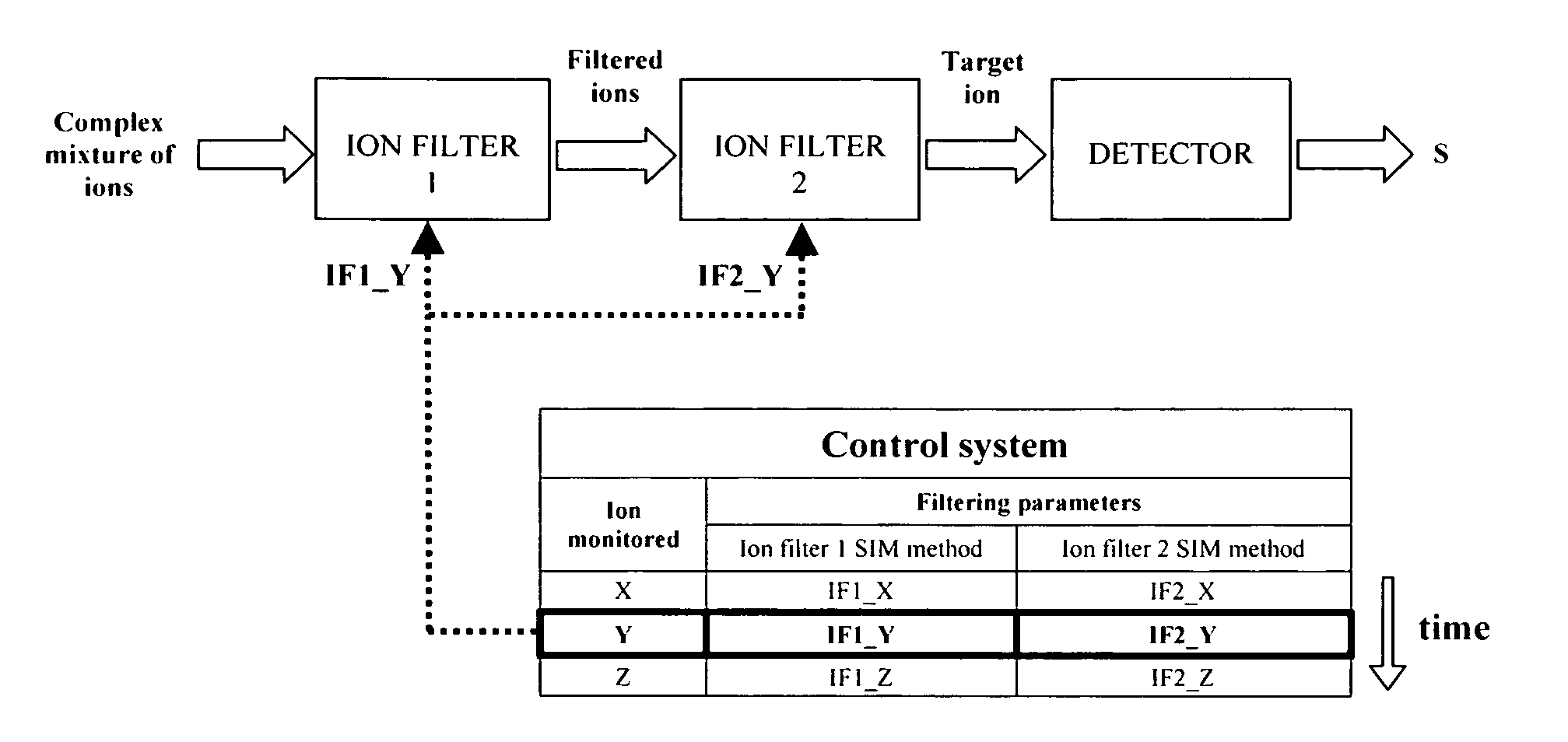Method and apparatus to accurately discriminate gas phase ions with several filtering devices in tandem
a technology of gas phase ions and filtering devices, which is applied in the direction of isotope separation, particle separator tubes, mass spectrometers, etc., can solve the problems of slow stage compared with ms separation, and inefficient coupling of ims and quadrupoles
- Summary
- Abstract
- Description
- Claims
- Application Information
AI Technical Summary
Problems solved by technology
Method used
Image
Examples
Embodiment Construction
[0041]A first embodiment of the invention couples a DMA in series with a single quadrupole mass spectrometer (1 QMS), for instance, by any of the methods proposed in U.S. patent application Ser. No. 11 / 786 / 688 by Rus and Fernandez de la Mora. The approach is illustrated in the drawing for the case where the first ion filter is a DMA and the second ion filter is a single quadrupole mass spectrometer. In this case, the mass spectrometer also contains the detector, which provides an output signal S that may be used by the Control system (shown at he bottom of the drawing) to launch an alarm signal, or to launch a different measurement sequence. The 1 QMS is controlled as in conventional SIM, where a list of target ions to be monitored (schematically named X, Y, Z in the drawing) is assigned by the operator, each with its given m / z, polarity (positive or negative) as well as other parameters such as desired focusing voltages, dwell time over which the MS detector will collect signal for...
PUM
 Login to View More
Login to View More Abstract
Description
Claims
Application Information
 Login to View More
Login to View More - R&D
- Intellectual Property
- Life Sciences
- Materials
- Tech Scout
- Unparalleled Data Quality
- Higher Quality Content
- 60% Fewer Hallucinations
Browse by: Latest US Patents, China's latest patents, Technical Efficacy Thesaurus, Application Domain, Technology Topic, Popular Technical Reports.
© 2025 PatSnap. All rights reserved.Legal|Privacy policy|Modern Slavery Act Transparency Statement|Sitemap|About US| Contact US: help@patsnap.com


